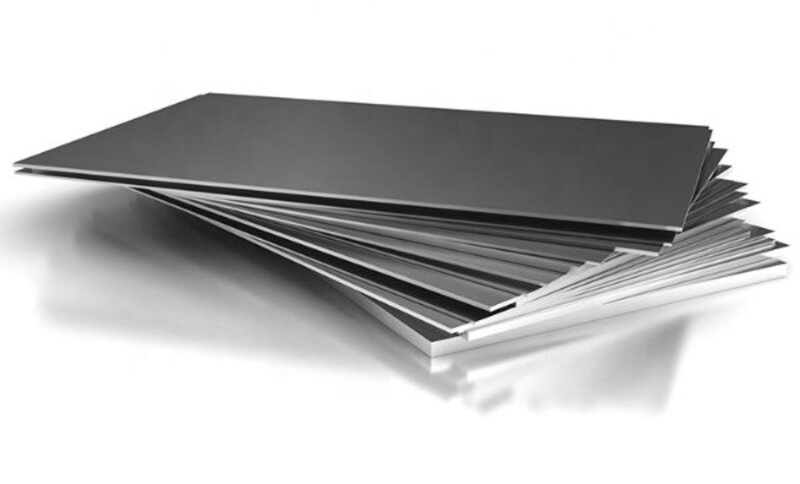
Current Location : Home > News > Industry News > Debugging method of stainless steel thick plate
Debugging method of stainless steel thick plate
Time:2021-09-07
Source:Wuxi Hongwang
Hits:273
Stainless steel thick plates are a kind of material that is loved by ten minutes in many fields. The products manufactured by it have excellent performance in all aspects and have a relatively long service life. It has been widely used in machinery manufacturing, construction engineering, kitchenware manufacturing, and rail vehicles. And other industries.
Nowadays, most of the stainless steel thick plates choose laser cutting, and to cut high-quality thick stainless steel plates requires certain skills.
Frequency control: Input basic parameters, increase or decrease the frequency according to the cross-section judgment.
Duty Cycle: Input the basic parameters, and increase or decrease the duty cycle according to the cross-section judgment.
Focus speed: the section effect is reached, increase the speed, the fastest value at the mode.
Determine the parameters: actual production, the duty cycle is above the critical value, and the speed is 90% of the limit value.
The frequency of the section stratification should be reduced or the positive focus should be reduced appropriately, and the duty cycle should be reduced when the section is yellowed.
As the frequency increases, the duty cycle increases, which can bring about an increase in speed, but the cross-sectional effect becomes different. The parameters can be adjusted according to the actual situation to balance the demand.
Hongwang Investment Group is an enterprise specializing in the production of stainless steel cold-rolled coils and stainless steel surface finishing products. Its core products are 200, 300, 400 series stainless steel cold-rolled coils, whole coils and plate surface finishing products. The products are widely used in tableware, kitchen utensils, medical equipment, household appliances, auto parts, building decoration and other fields. The products are popular at home and abroad for their excellent product quality and good reputation. Look forward to working with you!
Nowadays, most of the stainless steel thick plates choose laser cutting, and to cut high-quality thick stainless steel plates requires certain skills.
1. Cutting and debugging method of stainless steel thick plate
Nozzle selection: According to the thickness of stainless steel required by customers, correct the nozzle size and adjust the required air pressure.Frequency control: Input basic parameters, increase or decrease the frequency according to the cross-section judgment.
Duty Cycle: Input the basic parameters, and increase or decrease the duty cycle according to the cross-section judgment.
Focus speed: the section effect is reached, increase the speed, the fastest value at the mode.
Determine the parameters: actual production, the duty cycle is above the critical value, and the speed is 90% of the limit value.
The frequency of the section stratification should be reduced or the positive focus should be reduced appropriately, and the duty cycle should be reduced when the section is yellowed.
As the frequency increases, the duty cycle increases, which can bring about an increase in speed, but the cross-sectional effect becomes different. The parameters can be adjusted according to the actual situation to balance the demand.
2. Nozzle selection
The diameter of the nozzle determines the shape of the gas flow entering the incision, the gas diffusion area, and the gas flow rate, which affects the removal of melt and the stability of cutting. The air flow into the incision is large, the speed is fast, and the position of the workpiece in the air flow is appropriate, the stronger the jetting ability to remove the molten material. The thicker the stainless steel, the larger the nozzle should be used, the higher the air pressure setting, and the pressure and flow rate should be met at the same time to cut a normal section effect.3.Frequency debugging
The effect of frequency change on stainless steel thick plate cutting: the frequency is reduced from 500-200Hz, the cutting section effect becomes finer, and the layering gradually improves. When the frequency is set to 100Hz, it cannot be cut and the blue light is reversed. Through frequency change, find the best frequency range. In order to ensure the best cutting section, the number of pulses must be perfectly matched with the energy of a single pulse.4. Duty cycle debugging
The effect of duty cycle change on stainless steel thick plate cutting: duty cycle 53% is the critical value. If you continue to decrease the duty cycle, there will be traces of incomplete cutting on the lower surface, the duty cycle will increase to 60%, and the section will become rough and layered. Obviously, the cut surface is yellow.5. Focus selection
The focus is different, and the thickness, material, and quality that can be cut are also different. Different materials and thicknesses need to be adjusted to different focus.Hongwang Investment Group is an enterprise specializing in the production of stainless steel cold-rolled coils and stainless steel surface finishing products. Its core products are 200, 300, 400 series stainless steel cold-rolled coils, whole coils and plate surface finishing products. The products are widely used in tableware, kitchen utensils, medical equipment, household appliances, auto parts, building decoration and other fields. The products are popular at home and abroad for their excellent product quality and good reputation. Look forward to working with you!

Related News
Analysis of influencing factors of passivation film on stainless steel surface
2024-04-08Processing silicon wafers of surface steel sheets
2022-11-02There are so many application for Stainless Steel Thick Plate!
2022-04-112,700 Tons Steel Transported from Ningxia to Countries along “Belt and Road”
2020-11-09Modern Die Technology of Motor Stator and Rotor Iron Core
2023-03-15The main applications of stainless steel water tanks
2022-08-22






